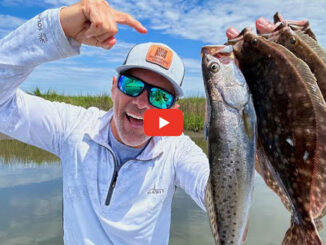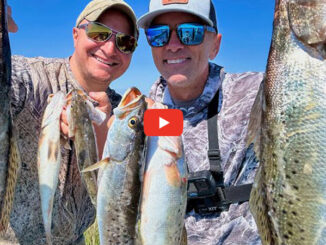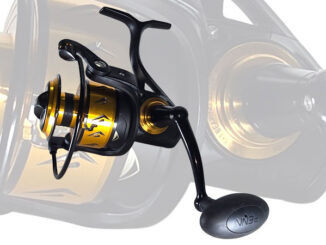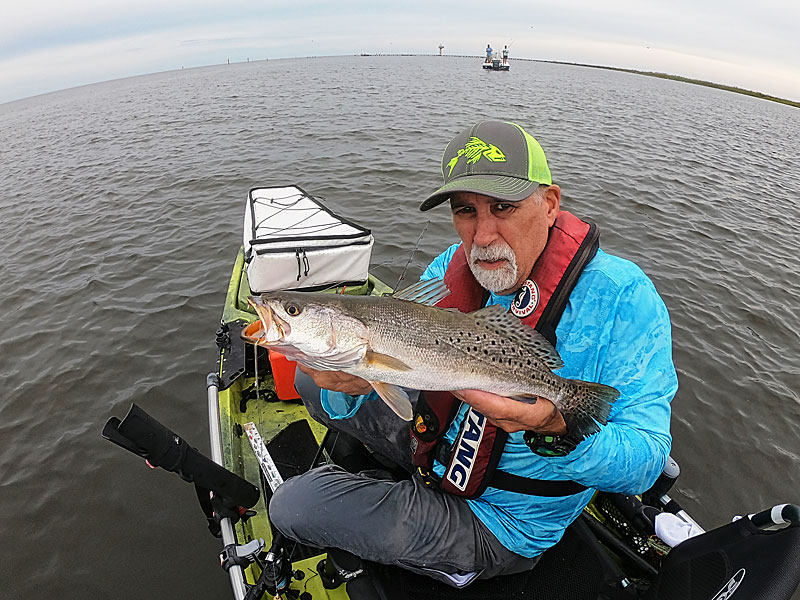
Fall has arrived, and so have the speckled trout. Areas where they were scarce in the summer are now jam-packed. Intermittent cool fronts keep trout assembling in the interior marshes within easy reach of kayak anglers.
There is no easier way to get on a limit than using live shrimp.
Of course, the hot ,summer months are generally thought of as live-shrimp season. Several years ago, live shrimp wasn’t even available until May. However, a change in the regulations allows bait dealers to catch shrimp year-round. Depending on the weather, live shrimp are sometimes available into December and start back up again in early spring.
Like many other features usually found on larger fishing vessels, a livewell is a common item found on many kayaks. Whether simple floating bait buckets or sophisticated wells with full water-exchange plumbing, it is easy to take live bait along in your kayak.
However, these small set-ups can still be difficult for kayak anglers to keep shrimp alive during summer’s heat. That’s what makes fall a perfect time to give it a try. The cooler air and water make it much easier to keep your shrimp lively.
No doubt, kayak anglers catch some specks all year-long, but as the summer wears on, the trout are on the coastal edges and islands that are generally too far for most kayakers to reach. However, that all changes as the trout gather on their way to the interior marsh. The schools build as the fronts become more frequent and the water temps cool. Limits come easy, sometimes within sight of your favorite launch.
Feed ‘em live shrimp
Whether fished on the bottom or under a popping cork, live shrimp are killer when those trout schools go on a ravenous feed. Anglers fishing in a boat can generally mix it up, with some anglers fishing plastics while others fish live shrimp. However, fishing solo in a kayak, it is much easier to keep the bite turned on by continuously using shrimp. There are days when nothing but plastics do the trick, but those usually come later in the years as the shrimp get scarce.
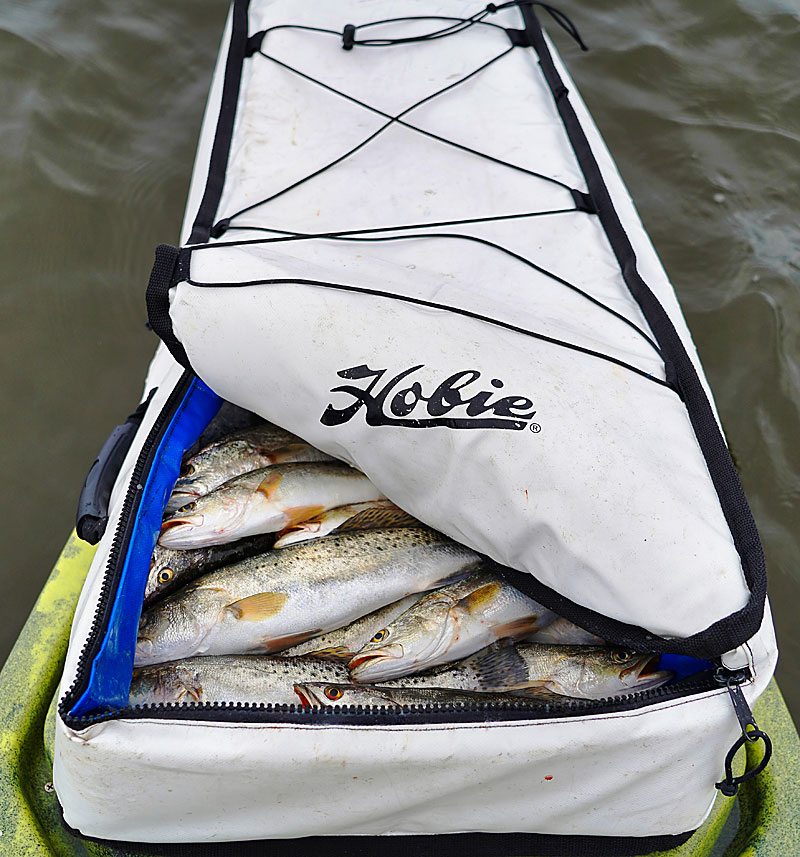
A simple bottom rig with a dropper hook a few inches above the weight is one of the easiest and most inexpensive to use. Stay away from the pre-made, wire-leader types that come with beads and snap swivels. They are unnecessary, the snaps are cheaply made, and they are not as effective as those you can make on your own. If the fish are holding deep, try to anchor where your ‘yak sits so you can vertically drop. This drastically increases the hookup ratio when you get a bite. If you have to cast out too far, the horizontal angle from sitting so close to the water doesn’t transmit the hookset efficiently. Also, a small treble hook also increases hookups over that of a typical J-hook or Kahle hook.
Under a popping cork, the choice of hooks is not as critical, and some anglers prefer to use a light jighead in case they want to switch to an artificial tail without having to re-tie.
Tweet-tweet, here they are
Fall is for the birds, too. While birds diving in summer is a sure-fire clue that there are fish underneath, it also works in the fall. The flocks may not be as large, but keep an eye peeled for gulls diving in a particular area, and chances are there will be fish underneath. Though not always trout, schools of ladyfish also spark bird activity. Ladyfish may not be good to eat, but their impressive leaps and hard fights offer great sport in the kayak.
Although not as critical as in a power boat, try to ease into casting distance of the bird activity with as little paddling or pedaling as you can. If possible, use the wind or current to quietly get you into position. Water this time of year is generally clearer, and fish are easy to spook. Stay with the school as long as you can. The frenzy can end at any minute, so don’t dally between fish. Get it off the hook and cast again as soon as possible.
Whether fishing birds or sitting on anchor, resist the urge to abandon the area if the action slows. The fish may have moved on or they may have simply just quit eating. Give it a few minutes to see if the action picks back up, but also keep an eye on surrounding water. Watch for nervous bait or current breaks that may have developed. Often, these schools only move a short distance and may still be nearby.
Start your fall trips by setting up where larger waters lead to the interior marsh. Be it lakes or lagoons, the funnel areas where they neck down are where these transition trout are going to stage. Top or bottom, toss out a live shrimp and be prepared for a bag full of speckled trout.
